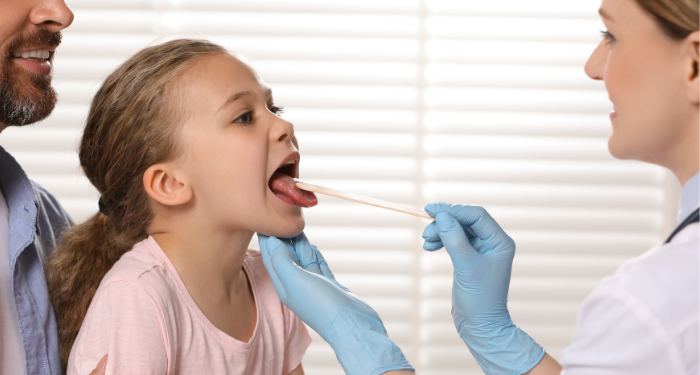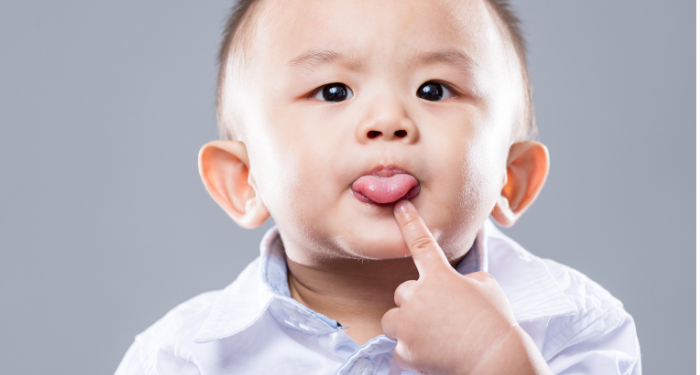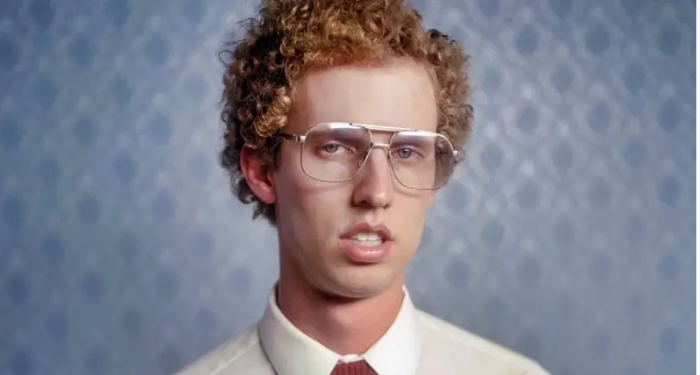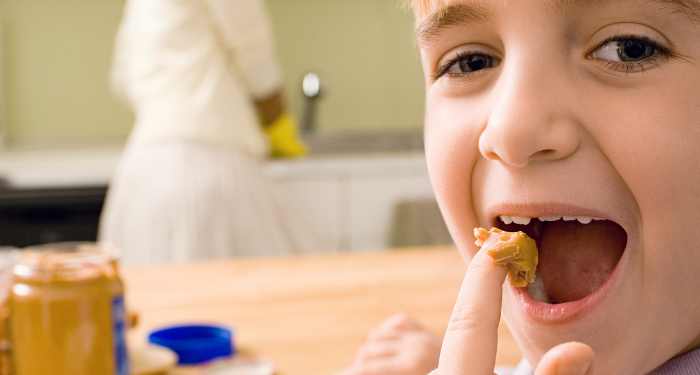
Woah- just called out the elephant in the room– and for good reason! It’s not new and it IS evidenced based!
Myo is 118 years old!
Let’s go back in time to understand how the process evolved. In 1892 Dr Edward H. Angle was the first to solely practice Orthodontics. He coined the term malocclusion and created the first prefabricated orthodontic appliance system. He believed the main reasons for malocclusion was due to the orofacial muscles and mouth breathing due to nasal obstruction and lip/tongue habits maintained the malocclusion.
Already we can see the link to myofunctional therapy. If the orofacial muscles are responsible for palate development and keeping teeth straight, if there is a disorder present, there will be dysfunction!
Fast forward to 1906 when Dr Alfred P. Rogers developed corrective exercises to improve tonicity and muscle function. Although not called myofunctional exercises, these were arguably the first myofunctional exercises! Later, Benno E. Lischer was the first person to use the term “myofunctional therapy” to describe Rogers exercises.
In 1918, Dr. Rogers wrote that the general body postures and an ‘imbalance’ of facial muscles resulted in malocclusion. He believed that the orofacial muscles were a living orthodontic appliance, which we now know is true!
That makes myofunctional therapy 118+ years old! It’s not new, the knowledge has been here and the body of evidence that supports myofunctional therapy is growing rapidly. We will include references here to some of the current research articles that support myofunctional therapy and its efficacy.
Want to keep growing and learning more? Be sure to stay in touch so that you know when the doors to The Myo Membership® are open.
If you aren’t sure, ask yourself these questions:
Do I doubt myself as a myofunctional therapist? Do I have questions and a desire to learn more? Do I want to become a confident and effective myofunctional therapist?
If you answered “yes” to any of these, The Myo Membership® is for you!
We have cultivated a collaborative space that is full of information on best treatment practices, lots of continuing education, and best of all it’s a safe place with no judgment or criticism. Join us inside The Myo Membership®!
P.S. You’ll find the references to some of the current literature that supports myofunctional therapy and its effectiveness below!
Happy reading!
Merkel-Walsh, R. (2020). Orofacial myofunctional therapy with children ages 0-4 and individuals with special needs, International Journal of Orofacial Myology and Myofunctional Therapy, 46 (1), 22-36. DOI: https://doi.org/10.52010/ijom.2020.46.1.3
Bigenzahn W, Fishchman L, Mayrhofer-Krammel U (1992). Myofunctional therapy in patients with orofacial dysfunctions affecting speech. Folia Phoniatrica et Logopaedica, 44(5):238-44.
· Level 4, Case series; 45 subjects, “Myofunctional therapy is highly instrumental also in phoniatrics as a special form of treatment for disorders of articulation.”
Ray, J (2002). Orofacial myofunctional therapy in dysarthria: a study on speech intelligibility. International Journal of Orofacial Myology, Nov;28:39-48.
· Level 4, Case series; 12 subjects, “Post-therapy measures indicated significant improvements in the stated goals as well as in speech intelligibility for single words.”
Ray J (2003). Effects of orofacial myofunctional therapy on speech intelligibility in individuals with persistent articulatory impairments. International Journal of Orofacial Myology, Nov;29:5-14.
· Level 4, Case series; 6 subjects, “Speech intelligibility increased significantly in all clients except the one diagnosed with developmental apraxia of speech.”
Kim KD, Lee HJ, Lee MH, Ryu HJ (2015). Effects of neck exercises on swallowing function of patients with stroke. Journal of Physical Therapy Science, Apr;27(4):1005-8. doi: 10.1589/jpts.27.1005. Epub 2015 Apr 30.
· Level 1,Randomized control study; 26 subjects, “The study results suggest the effectiveness of proprioceptive neuromuscular facilitation-based short neck flexion exercises as a treatment for swallowing disorders in stroke patients.”
Koyama Y, Sugimoto A, Hamano T, Kasahara T, Toyokura M, Masakado Y (2017). Proposal for a Modified Jaw Opening Exercise for Dysphagia: A Randomized, Controlled Trial. Tokai Journal of Experimental and Clinical Medicine, Jul 20;42(2):71-78.
· Level 1, Case controlled study; 16 subjects, “Modified jaw opening exercise is feasible without any adverse events in post-stroke patients, and it promotes anterior hyoid displacement during swallowing.”
Steele CM, Bayley MT, Peladeau-Pigeon M, Nagy A, Namasivayam AM, Stokely SL, Wolkin T (2016). A Randomized Trial Comparing Two Tongue-Pressure Resistance Training Protocols for Post-Stroke Dysphagia. Dysphagia, Jun;31(3):452-61. doi: 10.1007/s00455-016-9699-5. Epub 2016 Mar 2.
· Level 1, Randomized controlled study; 6 subjects, “Improved penetration-aspiration does not necessarily accompany improvements in tongue strength, however tongue-pressure resistance training does appear to be effective for reducing thin liquid vallecular residue.
Campaign SM, Fontes MJ, Camrgos PA, Freire LM (2010). The impact of speech therapy on asthma and allergic rhinitis control in mouth breathing children and adolescents. Jornal de Pediatria, May-Jun;86(3):202-8.doi:10.2223/JPED.1995. Epub 2010 May 6.
· Level 2, Randomized control study; 24 subjects, Improved outcome versus breathing therapy alone.
Thompson DJ, Throckmorton GS, Buschang PH (2001). The effects of isometric exercise on maximum voluntary bite forces and jaw muscle strength and endurance. Journal of Oral Rehabilitation, Oct;28(10):909-17.
· Level 1, Randomized control study; 28 subjects, “Increases in maximum bite force can be easily produced with training, but that actual strengthening of the jaw muscles is more difficult to achieve.”
Diaferia G, Badke L, Santos-Silva R, Bommarito S, Tufik S, Bittencourt L (2013). Effect of speech therapy as adjunct treatment to continuous positive airway pressure on the quality of life of patients with obstructive sleep apnea. Sleep Medicine, Jul;14(7):628-35. doi: 10.1016/j.sleep.2013.03.016. Epub 2013 May 20.
· Level 1, Randomized control study; 100 subjects, “Speech therapy alone as well as in association with continuous positive airway pressure treatment might be an alternative treatment for the improvement of quality of life in patients with obstructive sleep apnea.
Diaferia G, Santos-Silva R, Truksinas E, Haddad FLM, Santos R, Bommarito S, Gregorio LC, Tufik S, Bittencourt L (2017). Myofunctional therapy improves adherence to continuous positive airway pressure treatment. Sleep and Breathing, May;21(2):387-395. doi: 10.1007/s11325-016-1429-6. Epub 2016 Dec 2.
· Level 1, Randomized control study; 100 subjects, “Our results suggest that in patients with obstructive sleep apnea syndrome, myofunctional therapy may be considered as an adjuvant treatment and an intervention strategy to support adherence to continuous positive airway pressure treatment.
Guimaraes KC, Drager LF, Genta PR, Marcondes BF, Lorenzi-Filho G (2009). Effects of oropharyngeal exercises on patients with moderate obstructive sleep apnea syndrome. American Journal of Respiratory and Critical Care Medicine, May 15;179(10):962-6. doi: 10.1164/rccm.200806-981OC. Epub 2009 Feb 20.
· Level 1, Randomized control study; 31 subjects, “Oropharyngeal exercises significantly reduce obstructive sleep apnea syndrome severity and symptoms and represent a promising treatment for moderate obstructive sleep apnea syndrome.”
Camacho M, Certal V, Abdullatif J, Zaghi S, Ruoff CM, Capasso R, Kushida CA (2015). Myofunctional therapy to treat obstructive sleep apnea: a systematic review and meta-analysis. Sleep. 2015;38(5):669-675. doi:10.5665/sleep.4652.
· Level 1, Meta-analysis of 9 studies, “Current literature demonstrates that myofunctional therapy decreases apnea-hypopnea index by approximately 50% in adults and 62% in children.”
Camacho M, Guillleminault C, Wei JM, Song SA, Noller MW, Reckley LKm Fernandez-Salvador C, Zaghi S (2018). Oropharyngeal and tongue exercises (myofunctional therapy) for snoring: a systematic review and meta-analysis. European Archives of Otorhinolaryngology, Apr;275(4):849-855. doi: 10.1007/s00405-017-4848-5. Epub 2017 Dec 23.
· Level 1, Meta-analysis of 9 studies, “Myofunctional therapy has reduced snoring in adults based on both subjective questionnaires and objective sleep studies.”
Villa MP, Evangelisti M, Martella S, Barreto M, Del Pozzo M (2017). Can myofunctional therapy increase tongue tone and reduce symptoms in children with sleep-disordered breathing? Sleep and Breathing, Dec;21(4):1025-1032. doi: 10.1007/s11325-017-1489-2. Epub 2017 Mar 18.
· Level 1, Randomized control study; 54 subjects, “Oropharyngeal exercises appear to effectively modify tongue tone, reduce sleep disordered breathing symptoms and oral breathing, and increase oxygen saturation, and may thus play a role in the treatment of sleep disordered breathing.”
Bandyopadhyay A, Kaneshiro K, Camacho M. Effect of myofunctional therapy on children with obstructive sleep apnea: a meta-analysis. Sleep Med. 2020 Nov;75:210-217. doi: 10.1016/j.sleep.2020.08.003. Epub 2020 Aug 10. PMID: 32861058.
݀Level 1, Metaanalysis: Despite heterogeneity in exercises, myofunctional therapy decreased AHI by 43% in children, and increased mean oxygen saturations in children with mild to moderate OSA and can serve as an adjunct OSA treatment.
de Felicio CM, de Oliveira MM, da Silva MA (2010). Effects of orofacial myofunctional therapy on temporomandibular disorders. Journal of Craniomandibular Practice, Oct; 28(4):249-59.
· Level 1, Randomized control study; 30 subjects, “Orofacial myofunctional therapy favored a significant reduction of pain sensitivity to palpation of all muscles studied but not for the temporomandibular joints; an increased measure of mandibular range of motion; reduced Helkimo’s Di and Ai scores; reduced frequency and severity of signs and symptoms; and increased scores for orofacial myofunctional conditions.”
Machado BC, Mazzetto MO, da Silva MA, de Felicio CM (2016). Effects of oral motor exercises and laser therapy on chronic temporomandibular disorders: a randomized study with follow-up. Lasers in Medical Science, Jul;31(5):945-54. doi: 10.1007/s10103-016-1935-6. Epub 2016 Apr 16.
· Level 1, Randomized control study; 102 subjects, “Low level laser therapy combined with orofacial myofunctional exercises was more effective in promoting temporomandibular disorder rehabilitation than low level laser therapy alone was.”
Jónsson T (2016). Orofacial dysfunction, open bite, and myofunctional therapy. European Journal of Orthodontics, June;38(3):235-236. doi: 10.1093/ejo/cjv091
· Level 2, Randomized control study of lesser quality research, “The results after 6 months of OMT and another 6 months of follow-up confirmed a significant improvement in tongue posture and anterior occlusal relationship.”
Van Dyck C, Dekeyser A, Vantricht E, Manders E, Goeleven A, Fieuws S, Willems G (2016). The effect of orofacial myofunctional treatment in children with anterior open bite and tongue dysfunction: a pilot study. The European Journal of Orthodontics. June;38(3):227-234. doi:10.1093/ejo/cjv044
· Level 1, Randomized controlled study; 22 subjects, “Orofacial myofunctional therapy can positively influence tongue behaviour. However, further research is recommended to clarify the success of OMT as an adjunct to orthodontic treatment and to identify possible factors influencing the outcome.”




